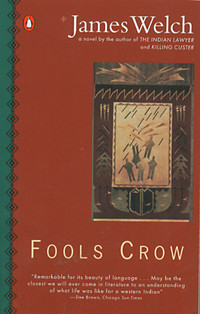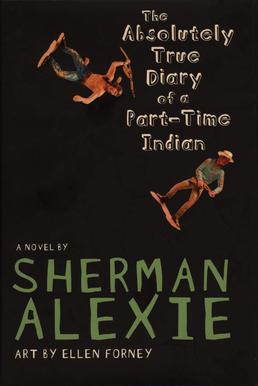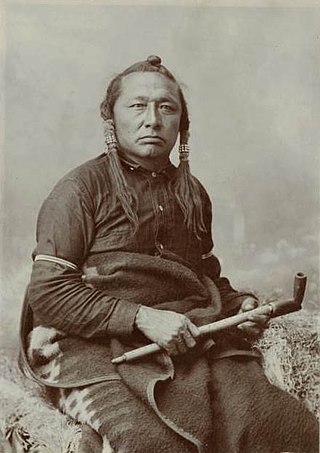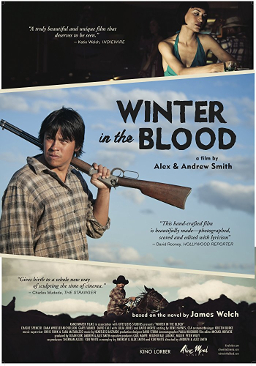
The Piegan are an Algonquian-speaking people from the North American Great Plains. They are the largest of three Blackfoot-speaking groups that make up the Blackfoot Confederacy; the Siksika and Kainai are the others. The Piegan dominated much of the northern Great Plains during the nineteenth century.

The Blackfoot Confederacy, Niitsitapi, or Siksikaitsitapi, is a historic collective name for linguistically related groups that make up the Blackfoot or Blackfeet people: the Siksika ("Blackfoot"), the Kainai or Blood, and two sections of the Peigan or Piikani – the Northern Piikani (Aapátohsipikáni) and the Southern Piikani. Broader definitions include groups such as the Tsúùtínà (Sarcee) and A'aninin who spoke quite different languages but allied with or joined the Blackfoot Confederacy.
The Marias Massacre was a massacre of Piegan Blackfeet Native peoples which was committed by the United States Army as part of the Indian Wars. The massacre occurred on January 23, 1870, in Montana Territory. Approximately 200 Native people were killed, most of whom were women, children, and older men.

Leslie Marmon Silko is an American writer. A woman of Laguna Pueblo descent, she is one of the key figures in the First Wave of what literary critic Kenneth Lincoln has called the Native American Renaissance.

Sherman Joseph Alexie Jr. is a Native American novelist, short story writer, poet, screenwriter, and filmmaker. His writings draw on his experiences as an Indigenous American with ancestry from several tribes. He grew up on the Spokane Indian Reservation and now lives in Seattle, Washington.

James Phillip Welch Jr., who grew up within the Blackfeet and A'aninin cultures of his parents, was a Native American novelist and poet, considered a founding author of the Native American Renaissance. His novel Fools Crow (1986) received several national literary awards, and his debut novel Winter in the Blood (1974) was adapted as a film by the same name, released in 2013.
The Native American Renaissance is a term originally coined by critic Kenneth Lincoln in the 1983 book Native American Renaissance to categorise the significant increase in production of literary works by Native Americans in the United States in the late 1960s and onwards. A. Robert Lee and Alan Velie note that the book's title "quickly gained currency as a term to describe the efflorescence on literary works that followed the publication of N. Scott Momaday's House Made of Dawn in 1968". Momaday's novel garnered critical acclaim, including the Pulitzer Prize for Fiction in 1969.

The Lone Ranger and Tonto Fistfight in Heaven is a 1993 collection of interconnected short stories by Sherman Alexie. The characters and stories in the book, particularly "This Is What It Means to Say Phoenix, Arizona", provided the basis of Alexie's screenplay for the film Smoke Signals.

Earl Old Person was an American Indian political leader and the honorary lifetime chief of the Blackfeet Nation in Montana, United States.

Fools Crow is a 1986 novel written by Native American author James Welch. Set in Montana shortly after the Civil War, this novel tells of White Man's Dog, a young Blackfeet Indian on the verge of manhood, and his band, known as the Lone Eaters. The invasion of white society threatens to change their traditional way of life, and they must choose to fight or assimilate. The story is a portrait of a culture under pressure from colonization. The story culminates with the historic Marias Massacre of 1870, in which the U.S. Cavalry killed a friendly band of Blackfeet, consisting mostly of non-combatants.

Mourning Dove or Humishuma was a Native American author best known for her 1927 novel Cogewea, the Half-Blood: A Depiction of the Great Montana Cattle Range and her 1933 work Coyote Stories.

The Absolutely True Diary of a Part-Time Indian is a first-person narrative novel by Sherman Alexie, from the perspective of a Native American teenager, Arnold Spirit Jr., also known as "Junior," a 14-year-old promising cartoonist. The book is about Junior's life on the Spokane Indian Reservation and his decision to go to a nearly all-white public high school away from the reservation. The graphic novel includes 65 comic illustrations that help further the plot.

Little Bear was a Cree leader who lived in the District of Alberta, Idaho Territory, Montana Territory, and District of Saskatchewan regions of Canada and the United States, in the 19th and early 20th centuries. He is known for his participation in the 1885 North-West Rebellion, which was fought in Alberta and Saskatchewan.
Native American literature is literature, both oral and written, produced by Native Americans in what is now the United States, from pre-Columbian times through to today. Famous authors include N. Scott Momaday, Leslie Marmon Silko, Simon Ortiz, Louise Erdrich, Gerald Vizenor, Joy Harjo, Sherman Alexie, D'Arcy McNickle, James Welch, Charles Eastman, Mourning Dove, Zitkala-Sa, John Rollin Ridge, Lynn Riggs, Hanay Geiogamah, William Apess, Samson Occom, Gerald Vizenor, Stephen Graham Jones, et al. Importantly, it is not "a" literature, but a set of literatures, since every tribe has its own cultural traditions. Since the 1960s, it has also become a significant field of literary studies, with academic journals, departments, and conferences devoted to the subject.

Winter in the Blood is a 2013 American film written and directed by brothers Alex Smith and Andrew J. Smith and produced by Native American author Sherman Alexie. The film was based on the debut novel Winter in the Blood (1974) by noted author James Welch, who was a leader of the Native American renaissance in literature.

Co=ge=we=a, The Half-Blood: A Depiction of the Great Montana Cattle Range is a 1927 Western romance novel by Mourning Dove, also known as Hum-Ishu-Ma, or Christine Quintasket. It is one of the earliest novels written by an indigenous woman from the Plateau region. The novel includes the first example of Native American literary criticism.
Jessica Louise Donaldson Schultz Graham (1887–1976) was an English professor at Montana State College and social worker on Native reservations in Montana and Wyoming.

Mountain Chief was a South Piegan warrior of the Blackfoot Tribe. Mountain Chief was also called Big Brave (Omach-katsi) and adopted the name Frank Mountain Chief. Mountain Chief was involved in the 1870 Marias Massacre, signed the Treaty of Fort Laramie in 1868, and worked with anthropologist Frances Densmore to interpret folksong recordings.

John Two Guns White Calf (1872–1934) was a chief of the Piegan Blackfeet in Montana. He was born near Fort Benton, Montana, and was the adopted son of Chief White Calf. After the elder White Calf died in 1903, while a guest of President T. Roosevelt in Washington, D.C., White Calf became the last chief of the Blackfoot Tribe. He died at Blackfeet Indian hospital, of attack of flu according to the Choteau Acantha, however the Indian agency said pulmonary tuberculosis at the age of 63 and is buried in a Catholic cemetery in Browning, Montana.

The Only Good Indians is a 2020 horror novel by Stephen Graham Jones. It was first published on July 14, 2020, through Saga Press and Titan Books. This novel follows four members for the Blackfeet Nation as they come to terms with events that happened a year prior.
















